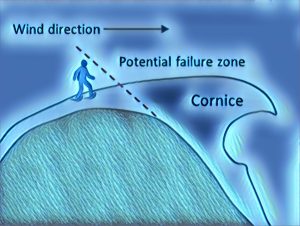Be AdventureSmart in BC Parks this winter!
Categories:
Guest blog by BC AdventureSmart
Did you know that BC Search and Rescue volunteers respond to 1,900 incidents each year?
Did you know that over 30% of those incidents, in winter, are for user groups such as snowmobilers, backcountry skiers, winter hikers and snowshoers?
Did you know that the majority of those winter incidents are in the East Kootenays and Sea to Sky region?
Did you know the top three causes for search and rescue in BC are people getting injured, lost/disoriented or exceeding their abilities?
Heading outdoors this winter into BC Parks?
Start with BC AdventureSmart and get informed before you go outdoors!
For the past 17 years, BC AdventureSmart has been increasing awareness to help reduce the number and severity of search and rescue (SAR) incidents by providing outdoor education and encouraging best practices for outdoor safety.
Enthusiasts rarely head out for an outdoor adventure expecting that something will go wrong, and, most times, everything will go right. However, the one time that the unexpected happens…your investment in trip safety can mean the difference between a successful outcome and becoming a statistic.
This winter as you plan your adventures in BC Parks, always remember the three Ts;
Trip Planning, Training, and Taking the Essentials.
Applying these safety tips can help lessen the risk and ensure your outdoor adventures in BC Parks are safe and responsible.

TRIP PLANNING
To increase your chances of having an enjoyable and safe outdoor adventure within BC Parks, trip planning is essential. This will ensure you know exactly where you’re going, what the conditions and terrain are like, and the weather you can expect on the day. It will also allow authorities to quickly find you if anything does go wrong.
When you’re trip planning, always do the following:
- Plan your travel route
- Know the terrain and conditions
- Check the weather
- Fill out a trip plan
Though it is beautiful, the B.C. backcountry is remote and can be unpredictable. Severe weather and avalanches are two of its primary hazards, so for any backcountry travel you – and everyone in your group – must be self-sufficient. If you’re travelling in avalanche terrain, ensure that you and your group also have proper avalanche training. No matter which backcountry sport you choose – skiing, snowboarding, snowshoeing or snowmobiling – always be thoroughly prepared before you head out.
Ensure that you:
- understand and recognize weather patterns
- can read alpine terrain
- know the avalanche dangers
- carry and practice with an avalanche transceiver, probe and shovel
- check conditions before heading out
Ultimately, sound judgment and knowing when to turn around and save it for another day are your most important backcountry survival skills.
LEARN MORE ABOUT TRIP PLANNING
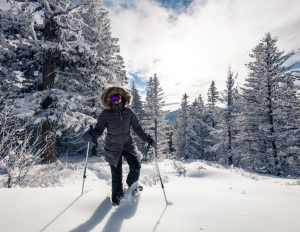
TRAINING
Preparing for winter outdoor recreation in BC Parks involves assessing your current knowledge, skills, and ability, and understanding your limits.
When planning your outdoor excursion, always do the following:
- Obtain the knowledge and skills you need before heading out.
- Know and stay within your limits.
For example, if you’re new to snowshoeing, begin on one of BC Parks’ more easily accessible snowshoe trails. Consider taking a guided tour to learn from the experts. Build up your endurance on short trails before attempting longer trails or more challenging terrain.
Venturing into provincial park trails or backcountry destinations requires knowledge, skills, equipment, and preparation in case of an emergency.
Training Opportunities!
Join BC AdventureSmart for one of their winter webinars, specifically ‘Snow Safety Education-Backcountry’
Book any of the free AdventureSmart programs to BE PREPARED
Join Avalanche Canada for one of their winter webinars or sign up for one of their Avalanche Skills Training courses.
Visit Avalanche Canada’s avalanche safety tips, or check out their Avy Savvy page to learn more.
LEARN MORE ABOUT TRAINING

TAKING THE ESSENTIALS
No matter how well you know the terrain or how experienced you are in an activity, always carry the essentials and know how to use them. These are basic survival items you should have in any outdoors situation.
The essentials are:
- Flashlight/headlamp
- Fire-making kit
- Signaling device (i.e., whistle)
- Extra food and water
- Extra clothing
- Navigational/communication devices
- First aid kit
- Emergency blanket/shelter
- Pocket knife
- Sun protection
- Seasonal and sport-specific gear (i.e. avalanche transceiver, shovel, probe)
LEARN MORE ABOUT THE ESSENTIALS
WINTER SPECIFIC SAFETY
From ice thickness, hypothermia and cold water immersion to TREE WELLS and CORNICES, season specific safety is critical in reaching your destination. Your destination is HOME. Learn more about winter specific safety.
WHAT TO DO IN AN EMERGENCY IN BC PARKS
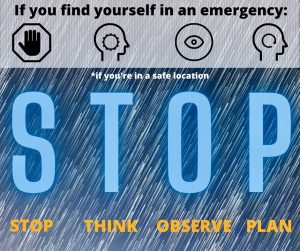 S | T | O | P — Stop Think Observe Plan Then ACT!
S | T | O | P — Stop Think Observe Plan Then ACT!
The acronym STOP (stop, think, observe, plan, then act) highlights the importance of a survival attitude that involves carefully planned actions rather than irrational behaviour based on fear.
Stay where you are: It is very important to recognize that your body only has so much stored energy, and that it is essential to spend that energy efficiently.
People who carry on after they become lost usually get further from the trail and from people who are looking for them. Going downhill often leads to natural drainage gullies, which typically have very thick bush, expansive cliffs and waterfalls, making travel and searching more difficult. Staying put reduces the potential search area for SAR, because you will have left a trip plan with a friend, and they will know where to start looking.
LEARN MORE ABOUT THE S.T.O.P. ANALOGY
WHO SHOULD YOU CALL IN AN EMERGENCY AND WHEN SHOULD YOU CALL?
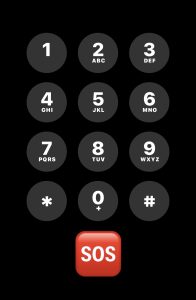
If you need help in the mountains and have cell reception, your FIRST ACTION should be to call 911 to let authorities know you’re in need of rescue. The 911 operator will dispatch the local police, or RCMP, and police will place the request for the local SAR group.
When your phone makes an emergency 911 call, it will connect with any cell tower in range, even if it is not from your network provider. (Therefore, a 911 call may go through even if you are not otherwise able to get cell reception where you are.)
If you are familiar with your smart phone’s capabilities, you may know how to obtain its GPS reading. (On iPhones, for example, the GPS coordinates are displayed in compass app if location services are turned on.)
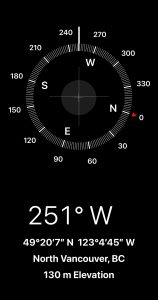
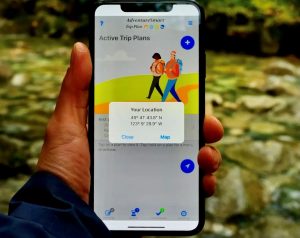
On the AdventureSmart TRIP PLAN APP, your coordinates are displayed on the home screen by pressing the arrow button.
During the 911 call, you can relay these coordinates to the operator, who will then pass that information on to police and SAR.
NO CHARGE FOR RESCUE
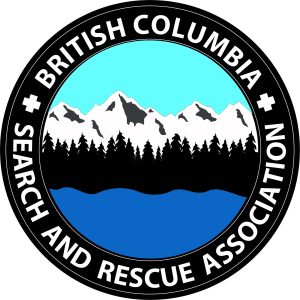
The British Columbia Search and Rescue Association (BCSARA) believes that the perceived or actual belief that a lost or injured person or their loved ones will be charged for a search and rescue response could directly affect the decision as to if or when a call for professional help will be made. It is the BC Search and Rescue Associations position that any delay in the deployment of Search and Rescue (SAR) services can negatively impact the outcome of a SAR mission.
For the nearly 3,000 volunteers that belong to the 79 registered search and rescue teams in the Province of British Columbia the moral obligation of helping those in need will always take precedence over political, legal, economic, and jurisdictional issues.
The BCSARA will conduct search and rescue missions when requested to do so by the authorized requesting agencies for persons in danger or distress in the province of BC without charge. BC SAR will do so regardless of the reason subjects have found themselves requiring SAR assistance.

AdventureSmart helps reduce the number and severity of Search & Rescue incidents in BC.
Visit AdventureSmart.ca to get informed!
Follow BC AdventureSmart on Instagram, Facebook, and Twitter.

